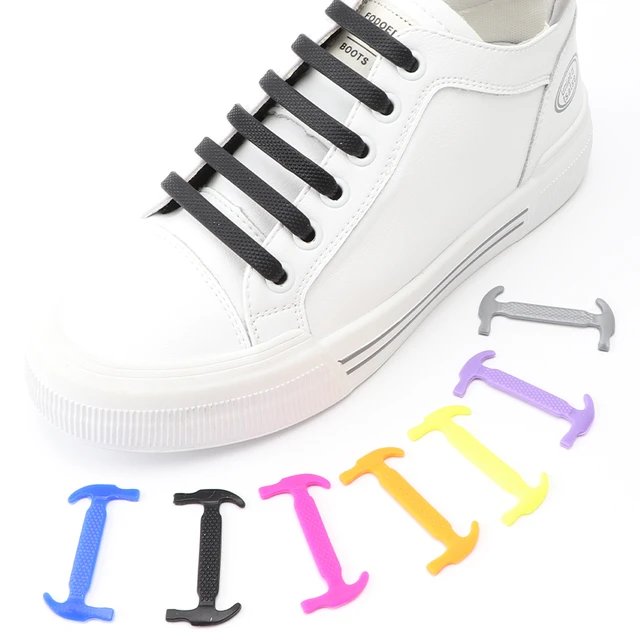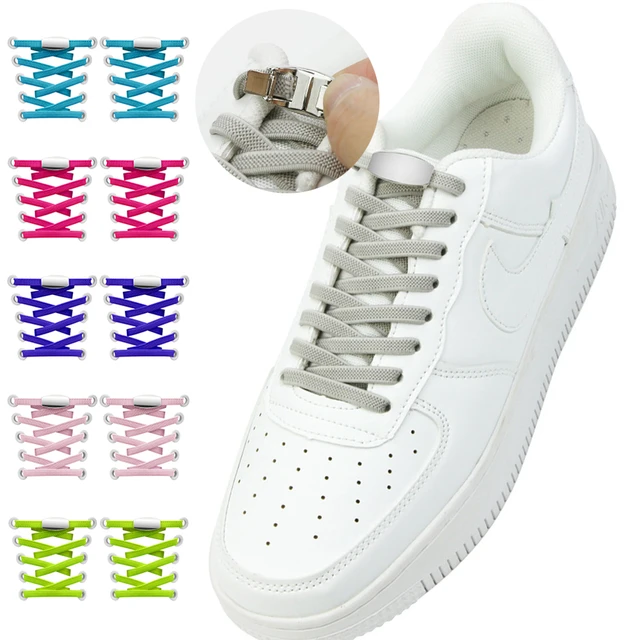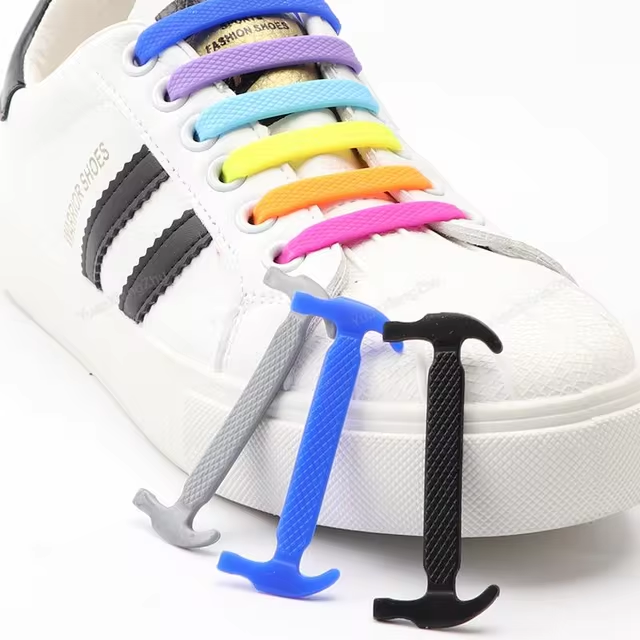When it comes to shoes, most people focus on style, fit, and comfort. However, a critical yet often overlooked aspect is the length of shoelaces. How long should shoelaces be? This question might appear trivial, but the right length can significantly affect both the shoe’s performance and the wearer’s experience. In this comprehensive guide, we’ll explore various factors determining shoelace length, provide practical tips for measuring and finding the right size, and delve into the different types of laces and their applications.
Understanding Shoelace Length Requirements
The Basics of Shoelace Sizing
To determine how long shoelaces should be for a particular shoe style, it’s essential first to understand the basic sizing guidelines. Shoelaces come in various lengths, typically measuring between 30 inches and 108 inches, depending on the shoe type. The number of eyelets—the small holes where the laces pass through—directly influences the required length, as more eyelets mean longer laces.
For instance, casual sneakers or low-cut shoes generally require laces ranging from 30 to 45 inches, depending on the number of eyelets. On the other hand, high-top or athletic shoes, which usually have multiple eyelets, often require laces in the range of 54 to 72 inches. Special cases, such as work boots or hiking shoes, may require laces over 72 inches, sometimes reaching up to 108 inches.
Eyelet Count and Lace Size
The ideal shoelace length generally correlates with the number of eyelets on the shoe. Here’s a general guideline for lacing based on eyelet count:
- 2-3 Eyelets: 30-36 inches
- 4-5 Eyelets: 36-45 inches
- 6-7 Eyelets: 54-63 inches
- 8-9 Eyelets: 63-72 inches
- 10-12 Eyelets: 72-108 inches
While these guidelines serve as a helpful starting point, individual preferences also play a critical role. For instance, some individuals may prefer longer laces for added loops or bows, while others might opt for shorter ones for a more streamlined appearance.
Choosing the Right Material
Types of Shoelace Materials
The material of the shoelaces can also influence the required length. Different materials have varying thicknesses and textures, which can affect how much lace is necessary to achieve a secure fit.
- Cotton: A popular material known for its comfort and range of styles. Cotton laces generally have a standard thickness, making them easy to use across many shoe types.
- Polyester: Durable and often more resistant to fraying than cotton, polyester laces may have a slightly different texture, which can alter the way they fit through the eyelets.
- Nylon: Known for its strength and durability, nylon laces can hold up well under pressure. However, they tend to be sleeker and thinner.
- Leather: Aesthetically pleasing and durable, leather laces often come in shorter lengths and thicker widths, requiring some adjustments when measuring.
Choosing the right material is essential in finding the perfect shoelace length. Laces made from different materials will behave differently when laced, possibly altering how tightly or loosely they fit when pulled.
Thickness and Lace Performance
Lace thickness significantly affects how well they fit through the eyelets. A thicker lace will require removing some loops if they are too long, while thinner laces may not fill the eyelets completely, potentially causing slippage during wear. It’s essential to consider both thickness and length when choosing shoelaces to ensure they perform adequately for your specific activities.
Features to Consider
Functional Considerations
How long should shoelaces be? Beyond mere aesthetics, the functionality of shoelaces also plays a critical role. For example, if you’re into sports or outdoor activities, you may want a longer lace so you can tie more secure knots. Lace lock techniques—which involve using the laces to create additional grip and support—might also necessitate longer lengths. In contrast, if you predominantly use your shoes for casual wear, shorter laces may suffice.
Aesthetic Preferences
While performance is crucial, aesthetics also shouldn’t be neglected. The length, color, and pattern of the shoelaces can either enhance or detract from your overall look. A bold, brightly colored lace can stand out against a neutral shoe, adding flair to an outfit. On the contrary, inconspicuous laces can offer a subtle, polished look. When deciding how long your laces should be, keep in mind that aesthetics can dictate functional choices as well.
Environmental Considerations
In recent years, there has been a growing focus on sustainability across all aspects of fashion, including shoelaces. Some brands offer eco-friendly options made from recycled materials or sustainably sourced fibers. Choosing longer laces can also help minimize waste; if you find a length that fits multiple pairs of shoes, you can reduce the number of laces you need to buy, thereby contributing to lower environmental impact.
Tips for Measuring Shoelace Length
Simple Measurement Techniques
Now that we’ve examined how long shoelaces should be based on eyelet count, material, and other factors, it’s essential to know how to measure them accurately. Here are a few simple methods:
- Existing Laces: If you have laces that fit well in your shoes, remove them and measure their length—from tip to tip—using a standard ruler or measuring tape. This method gives the most accurate indication of what you need.
- Lacing Techniques: Consider how you prefer to lace your shoes. Some people use techniques that require more length, such as double lacing or crisscrossing. It’s a good idea to take this into account when determining the size.
- Visual Inspection: If you are unsure about the exact length, visually inspecting the lacing area can help. Generally, you don’t want laces to hang excessively or leave your shoe looking sloppy.
Factoring in Preference
Personal preference plays a crucial role in determining shoelace length. Some people prefer longer laces for looping or more elaborate tying styles. If you’re a fan of the double-knot method, you may find yourself favoring longer laces compared to those who prefer a simple bow.
 Buying Shoelaces: Where To Shop and What to Look For
Buying Shoelaces: Where To Shop and What to Look For
Best Places to Purchase Shoelaces
Finding the right length of shoelaces can often be challenging. Luckily, various outlets can help you source what you need:
- Shoe Retailers: Many shoe stores carry shoelaces, including specialty shops that might provide unique colors and materials.
- Online Retailers: Websites like Amazon often feature a wide variety of shoelaces, allowing you to filter by length, color, and material.
- Craft Stores: Crafting shops may have specialized laces, particularly in unusual colors or textures.
Knowing What to Look For
When you’re shopping for shoelaces, ensure you are considering the following:
- Length: Always check the length listed in the product description to avoid purchasing laces that are too long or too short.
- Material: Decide in advance what material suits your footwear and activity type to avoid disappointment.
- Style Features: Consider design features such as aglets (the tips of laces), color patterns, and whether the laces are waxed or untreated.
Conclusion: how long should shoelaces be
In summary, how long should shoelaces be? While the optimal lace length depends on various factors, including shoe type, eyelet count, and personal preferences, understanding these facets can substantially enhance both comfort and aesthetics. There isn’t a one-size-fits-all answer, and personal style plays a pivotal role in the decision-making process. This guide provides a comprehensive understanding of shoelace lengths, making it easier to choose the perfect pair for your footwear needs. Whether you’re a runner, hiker, or casual wear enthusiast, ensuring your shoelaces are the right length will contribute significantly to your overall experience in footwear.

